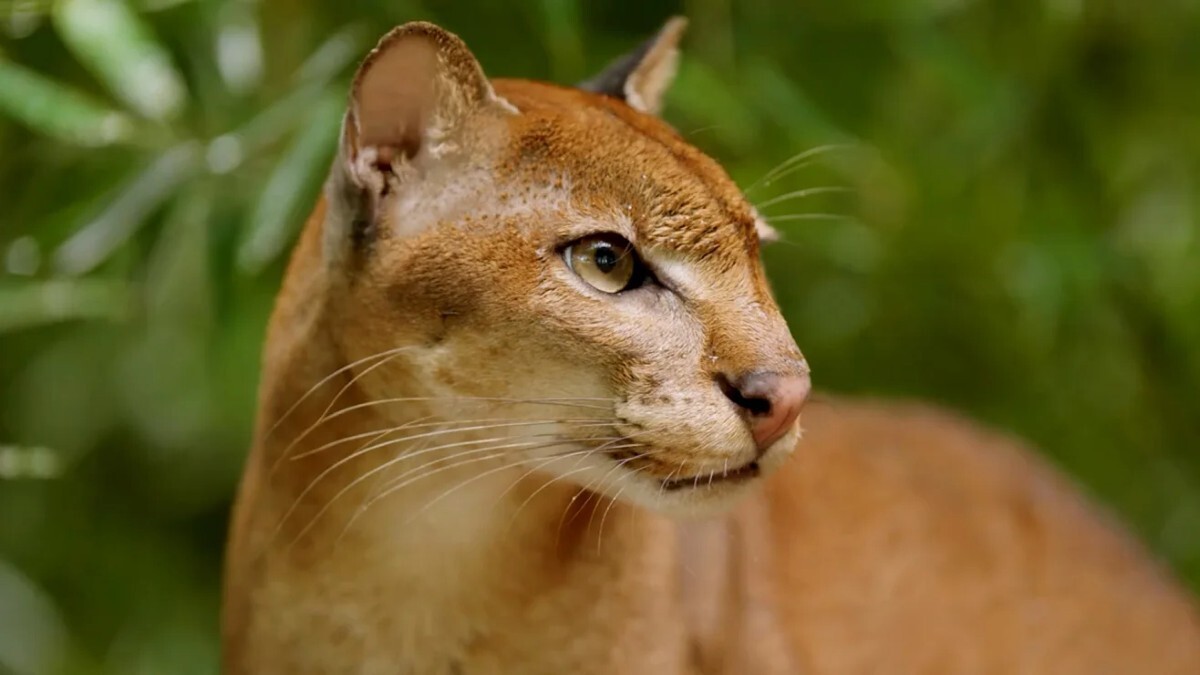動物学者のムウェジ・ムゲルワ
氏は
初めてアフリカゴールデンキャットを
目にしたとき、それが
何なのか
分からなかった。
When zoologist Mwezi Mugerwa first saw the African golden cat, he didn’t know what kind of animal it was.
。
When Mr. Mugerwa checked the footage from cameras set up in the forests of Uganda in the database, he discovered a strange animal, about twice the size of a domestic cat, appearing in the blurry black-and-white images.
。
This mysterious yellow cat is called Mbaka in the local language and is often caught in traps set in the forest.
「これは
知見を
得る
前に
種が
失われてしまうかもしれない」とムウェジ
氏は
語った。
This species may become extinct before we even understand it, said Mr. Mugerwa.
。
For the past 16 years, Mr. Mugerwa has dedicated his career to this large feline, the least known, understood, and studied in Africa.
この
生き
物は
中央アフリカや
西アフリカの
密林に
生息すると
考えられているが、その
姿は
極めて
捉えにくい。
It is believed that this creature inhabits the dense forests of Central and West Africa, but it is extremely difficult to spot.
。
Even the International Union for Conservation of Nature IUCN did not record an estimated population in its last assessment over 10 years ago.
ムウェジ
氏自身、
長年のフィールド
調査を
通じて3
回しかちらっと
目にしたことがないという。
Mr. Mugelwa himself has only witnessed it three times, despite many years of field research.
。
It is really very difficult to find this species in the wild.
。
Many of their habitats are located in extremely remote and isolated areas, said Mr. Mugerwa.
ムウェジ
氏は
今年、アフリカゴールデンキャットに
関する
取り
組みが
評価され、インディアナポリス
賞の
新興保全家賞を
受賞した。
This year, Mr. Mugerwa was recognized for his efforts regarding the African golden cat and received the Emerging Conservationist Award at the Indianapolis Prize.
。
Recognizing that accurately counting the population is the first step in conservation, Mr. Mugerwa began the first population surveys in various habitats.
は
来年発表される
見通しだ。
The results are scheduled to be announced next year.
。
Research using camera traps has become common in the study of wild cats, and researchers identify individuals by their distinctive spots and stripes.
。
However, since each photo must be checked individually, there are also limitations to installing camera traps.
。
そこでムウェジ氏は2019年、ネットワーク構想を打ち立てた。
Therefore, in 2019, he proposed the idea of building a network.
。
Although it took a lot of time to persuade my colleagues, there are now 46 experts from 19 countries participating in the network.
。
This network is called the African Golden Cat Conservation Alliance AGCCA, and experts have started camera trap surveys throughout the entire range believed to be the habitat of the African golden cat.
。
The image is provided by the National Geographic Society.
ただ、19
か国30
地域のカメラトラップから、
何千枚もの
画像を
確認するのは
容易なことではなかった。
However, checking thousands of photos from camera traps set up in 30 regions across 19 countries is by no means an easy task.
。
It was really very difficult, recalls Mr. Mugerwa.
。
Around the same time, his partner, the U.S.-based nonprofit organization Panthera, developed an AI algorithm that can identify individuals based on their distinctive patterns and quickly classify images.
トラの
縞模様を
指紋のように
活用する
方法と
似た
仕組みだ。
This method is similar to using a tiger’s stripes like fingerprints.
。
This is really important.
。
Thanks to that, we are now able to talk about the number and density of individuals, Mr. Mugerwa said.
AIなしで
個体識別するのは
ほぼ不可能との
見方を
示した。
He believes that it is almost impossible to identify individuals without AI.
。
According to provisional data, the population density of the African golden cat is extremely low even within protected areas.
。
In Uganda and Gabon, only 16 individuals have been recorded per 100 square kilometers.
。
The chain of investigations also reveals the actual impact of poaching.
。
According to Mr. Mugelwa, the density and distribution range are up to 50% higher in areas where hunting is prohibited.
。
According to research, the African golden cat is active both day and night, but most individuals are strictly nocturnal.
は
人間の
活動を
避けるのだろうという。
Its probably to avoid human activity during the day.

